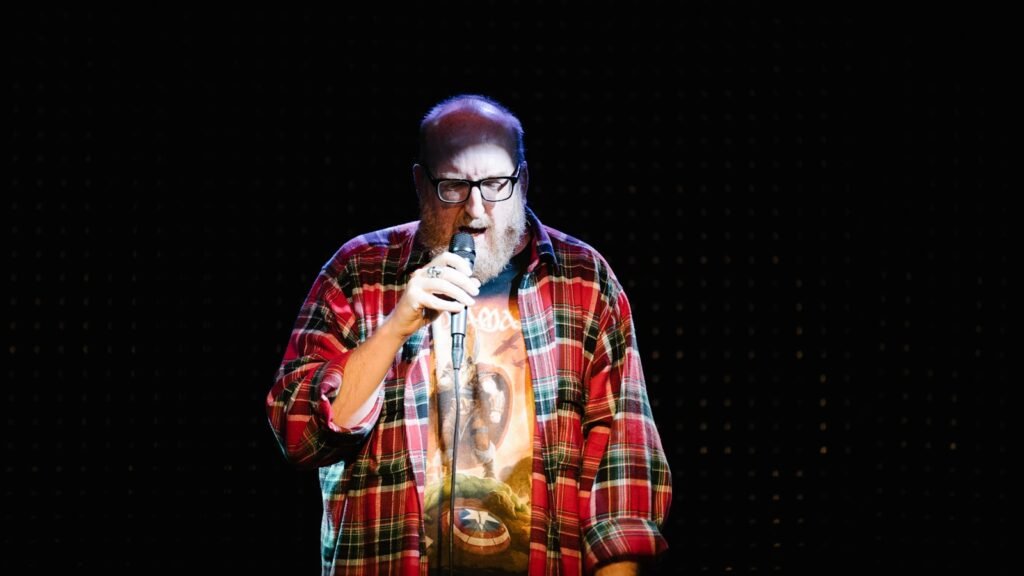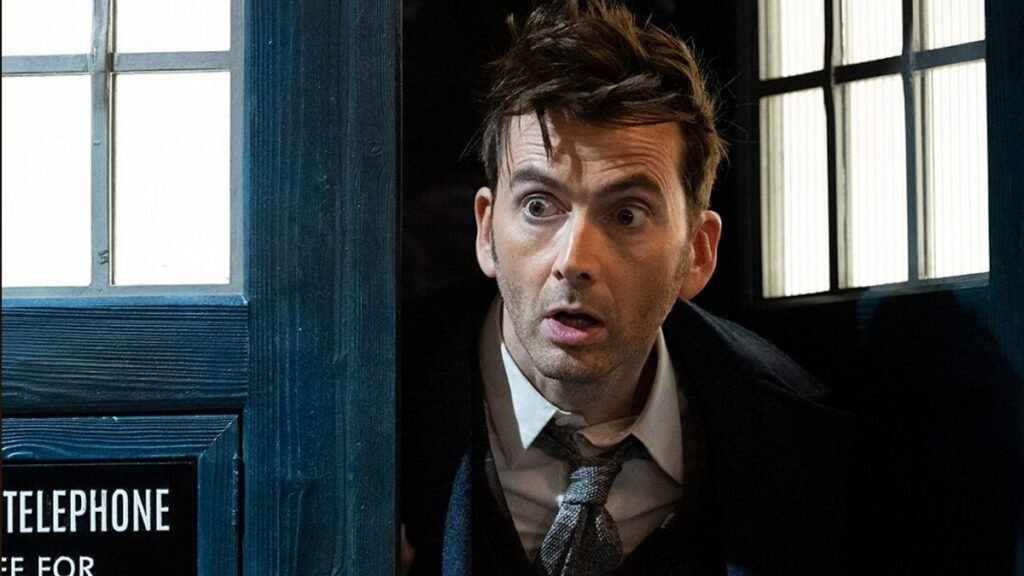The 1950s: The Birth of Classic TV Comedy
The 1950s were a time of television magic, where screens across America dazzled with the warmth of classic TV comedy. “I Love Lucy” and other beloved shows brought a wave of laughter and happiness into homes, heralding the arrival of sitcom greatness. As noted by television historian Robert J. Thompson, this decade marked a pivotal moment in entertainment history, as television rose to prominence as a cultural powerhouse.
At the forefront of this comedic revolution was “I Love Lucy,” starring Lucille Ball and Desi Arnaz, a show that not only won over audiences’ hearts but also left an indelible mark on the landscape of television comedy. Its wild antics and timeless wit laid the groundwork for future sitcoms to delve into relationship dynamics and the pandemonium of everyday life. Reflecting on Ball’s groundbreaking role in comedy, Carol Burnett remarked on her trailblazing spirit in a male-dominated industry.
Though it may feel like eons ago, the charm and humor of these classic TV comedies from the 1950s continue to captivate and inspire viewers today. They serve as timeless reminders that laughter knows no bounds or expiration dates.
The 1960s: The Rise of Counter-Culture Humor
In the era of the swinging sixties, television comedy underwent a radical transformation with the emergence of counter-culture humor. “The Smothers Brothers Comedy Hour” and “Rowan & Martin’s Laugh-In” shattered societal norms and boldly pushed boundaries with their irreverent wit. These shows served as powerful platforms for social commentary and satire, mirroring the chaotic spirit of the times. As George Carlin famously quipped, “Just ’cause you got the monkey off your back doesn’t mean the circus has left town.”
The 1960s witnessed a seismic upheaval in comedic television, giving rise to a cacophony of new voices. Echoing Bob Dylan’s iconic words, “The times they are a-changin’,” TV comedians embraced anti-establishment sentiments and injected audacious humor into mainstream culture. This was an era defined by rebellion and revolution, with TV comedy leading the charge in challenging norms and prompting audiences to question reality. Laughter became a form of dissent as comedians used their craft to navigate through turbulent waters of change during this tumultuous decade.
The 1970s: The Golden Age of Sitcoms
The 1970s, a perplexing time of sitcom dominance on the small screen, where laughter and heartwarming moments burst forth to captivate audiences. It was an era of television comedy like no other, where shows like “All in the Family,” “M*A*S*H,” and “The Mary Tyler Moore Show” bewildered viewers with their iconic storytelling.
With characters that left us questioning societal norms and addressing pressing issues of the time, these sitcoms challenged our minds while tickling our funny bones. As Emily Nussbaum so enigmatically stated, “These shows were more than just jokes; they were mirrors reflecting our changing world.” And indeed, they jolted us out of complacency with their blend of humor and social commentary.
The legacy of 1970s sitcoms is a tangled web woven into the fabric of television history, reminding us that entertainment can be a conduit for enlightenment and empathy. Looking back at this turbulent period on TV leaves us in awe of the power laughter has to unite us and uplift our spirits. These shows not only made us laugh but also stirred something deep within us, shaping our perceptions of society and ourselves in ways we never expected.
The 1980s: The Era of Quirky Friendships
The 1980s, a time of perplexing fashion choices and bursty hairstyles that defied gravity. Leg warmers and big hair were the norm, just like the quirky friendships we saw on our TV screens. “Cheers” and “The Golden Girls” ruled the airwaves, introducing us to a cast of lovable misfits and oddball duos that left us scratching our heads in wonder. Who could forget Sam Malone’s witty banter with Diane Chambers or the hilarious antics of Dorothy, Blanche, Rose, and Sophia?
These shows didn’t just entertain; they left us feeling like we had stumbled into a world where being different was celebrated. Friendship was at the forefront, as Betty White once mused about how it enhances life’s goodness and diminishes its evils. These shows were a burst of fresh air in a world obsessed with conformity they showed us that no matter how peculiar or out-of-place we may feel, there is always room for us in this crazy world.
So grab your friends (and maybe some cheesecake) and prepare for an unpredictable journey back to the 1980s. Where oddball friendships reigned supreme and laughter was indeed the best medicine for life’s rollercoaster ride.
The 1990s: The Dawn of Ensemble Comedy
Oh, the 1990s, a time when TV ensembles exploded onto our screens like fireworks on the Fourth of July. From the zany crew at Central Perk in “Friends” to the dysfunctional yet endearing Bundy family in “Married… with Children,” this era was bursting at the seams with unforgettable group dynamics that had us eagerly anticipating each new episode. As we huddled around our televisions, laughter echd through homes across the country, binding us together in moments of shared joy and camaraderie.
Each ensemble brought its own perplexing charm to our screens, drawing us into their world with a blend of wit, warmth, and a dash of that mysterious ingredient that kept us enthralled. Like magic, “A show about nothing” as Seinfeld famously put it became everything to us, while the vibrant characters in “The Fresh Prince of Bel-Air” imparted lessons on family, friendship, and staying true to oneself. The ’90s were a whirlwind of personalities, fashions, and plot twists that mirrored the eclectic tapestry of our own lives demonstrating that laughter truly is the universal force that unites us all.
The 2000s: The Evolution of Workplace Humor
The 2000s, oh what a time of perplexity and burstiness in workplace humor. Awkward office romances and never-ending team-building exercises filled the TV screens of this era, capturing the essence of office life like never before. Each week as we tuned in, a whirlwind of cubicle shenanigans played out before our eyes.
“The Office,” a true masterpiece of workplace comedies, introduced us to unforgettable characters like Michael Scott and Dwight Schrute. The mockumentary style drew us into the Dunder Mifflin family, cringe-worthy moments included. Mindy Kaling once remarked on the challenge of writing for Steve Carell’s character, highlighting the unique task of creating lines for Michael Scott that went beyond just being straightforward but rather aimed to embody his character fully. And indeed they succeeded in making him one of TV’s most iconic bosses. The show’s mix of humor and heart touched audiences far and wide, proving that even the most mundane workplace can be a comedic goldmine.
“30 Rock” was another standout gem in workplace comedy, taking us behind the scenes of a fictional sketch comedy show with its fast-paced jokes and outrageous plotlines keeping us on our ts. Tina Fey’s portrayal of Liz Lemon reminded us that amidst showbiz chaos, laughter is essential. As she famously quipped about man’s troubles stemming from an inability to sit quietly alone – how true it rings! Amidst deadlines and diva co-workers, sometimes all we need is a good chuckle to carry us through.
Looking back at these 2000s workplace comedies leaves no doubt that they were more than mere entertainment – they were lifelines for many viewers drowning in deadlines and stressors. Tuning into these sitcoms allowed viewers to escape momentarily from reality and find comfort in shared laughter with fictional colleagues. Alan Sepinwall often emphasizes how good TV has the power to uplift spirits and unite people; certainly, the workplace comedies from this era did just that by showcasing how crucial humor can be in surviving the workday grind – perplexing yet bursting with hilarity at every turn.
The 2010s: The Era of Streaming and Binge-Watching
The perplexing era of the 2010s, a time of endless streaming and binge-watching where we transformed into expert couch potats, smoothly transitioning from one series to another with the finesse of a seasoned remote control warrior. It’s like wandering through a never-ending candy store filled not with sweets, but an abundance of TV shows waiting to be devoured. As Mindy Kaling cleverly observed, “I find myself living in this extraordinary age of television where I can spend my Saturday night engrossed in an entire season without pause.
The emergence of streaming giants such as Netflix, Hulu, and Amazon Prime revolutionized entertainment consumption, allowing us to consume multiple seasons in one sitting effortlessly. No longer do we have to endure the agony of waiting a week for the next episode; now, we crave immediate satisfaction devoid of annoying commercial interruptions. In this bold new world, we form deep emotional connections with fictional characters at lightning speed – parting ways with a show feels akin to losing a cherished friend. Kevin Spacey aptly remarked on this phenomenon by stating that “We have become addicted to instant gratification when it comes to watching content. The days of patiently awaiting each weekly episode are numbered.” Ah yes, the marvels of modern technology and its impact on our social interactions who needs real-life companions when you have the cast of your favorite show accompanying you?
The 2020s: Navigating Friendship in the Digital Age
In the chaotic landscape of modern friendships, one can’t help but ponder if our bonds have been diluted by emojis and endless notifications. In a world where likes replace meaningful conversations, how do we uphold the true essence of companionship? Maybe, as Larry David amusingly suggested, “I prefer talking to strangers over people I actually know.” Are we all just strangers hidden behind our screens?
Amidst virtual hangouts and digital connections, we must confront whether our friendships are flourishing or merely existing in the online realm. As Jennifer Aniston wisely noted, “Technology can be a friend or a f.” It’s a delicate dance between staying linked digitally and being fully engaged in the present moment. So next time you’re tempted to send a text instead of dialing a number, remember the warmth of hearing your friend’s laughter on the other end. Let’s not allow our online personas to overshadow the beauty of genuine human interaction.
The Enduring Appeal of Friends Reunions
For devotees of the legendary TV series “Friends,” the prospect of a reunion is an enigma that stirs our emotions. It’s akin to reconnecting with long-lost companions, basking in memories of yesteryears when Ross, Rachel, Monica, Chandler, Phbe, and Jy reigned supreme on our screens. As Jennifer Aniston once mused, “I would do it… The girls would do it, and the boys would do it, I’m sure.” The nostalgia enveloping “Friends” is palpable, and just envisaging our beloved characters reunited fills us with warmth and elation.
There exists a bewitching aura surrounding the bond shared by the cast members of “Friends,” which effortlessly transcends onto the screen. Their chemistry is what imbued the show with timelessness, resonating with viewers spanning different eras. As Lisa Kudrow quipped once before, “We were on a break but we’re back now!” The enduring charm of “Friends” reunions lies not only in the mirth and camaraderie displayed on screen but also in feeling like part of a group of friends who have stood by us through thick and thin. So go ahead and grab your Central Perk mug; snuggle up on your couch as you allow yourself to be spirited away by the enchantment of “Friends” reunions – transporting you back to simpler times when a stellar TV show could lift your spirits and make you feel right at home.


